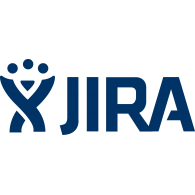Hardware
No Fear
Hardware

De-emphasize the magic
- It is in a product company's best interest for you to feel disempowered when it comes to tech.
- Consumers that are intimidated by technology will pay companies to repair, service, or simply replace devices year after year over a lifetime
- We can move beyond that fear by incrementally de-emphasizing the magic of technology until you become wizards yourselves

Hardware
refers to the physical elements of the computer that you can see and touch. This includes everything inside the computer case, known as components.

What is a Raspberry Pi?
The Pi 3 is a credit card size, wifi-capable computer with USB ports, an audio jack, a camera port, an SD slot, an HDMI out, a General Purpose Input/Output (GPIO) pinout, and more.

What is a Raspberry Pi?
It's what's called a single-board computer, which is a complete computer built on a single circuit board, with microprocessor(s), memory, input/output (I/O) and other features required of a functional computer.

What makes up the Boadcom system on a chip?
- Integrated Advanced reduced-instruction-set-compiling (RISC) Machine (ARM)
- Central Processing Unit (CPU)
- Graphics Processing Unit (GPU)



Input
Computing Operation
Output
Recommended Reading:
Technology will become less visible - instead, everyday objects will become imbued with hidden functionality that appears almost to be magic

Agile

Agile
- Considered the "Gold Standard" in Product Design and Development
- Involves adaptive planning, early delivery, and continuous improvement
- Involves a Product Manager, Project Manager, Developers, and several other roles
Agile cont.
- Product Managers, for example, are responsible for what is called "Backlog Grooming"
- The Backlog contains all of the tasks (or stories), in order of priority, that must be completed in order to design and build the product
Agile cont.
- Project Managers then take these stories and assign them to developers and designers
- Project Managers are responsible for running daily stand-ups, checking in on the status of tasks, and constructing Sprints
Agile Methodologies
- Scaled Agile Framework (SAFe)
- Kanban
- Extreme Programming (XP)
- SCRUM
Iteration is important!
Edison and his team prototyped over 3000 versions of the lightbulb

Iterations
- The basic building block of Agile development. Each iteration is a standard, fixed-length timebox, where teams deliver incremental value.
- You'll often hear these called Sprints or Design Sprints.
- The recommended duration is two weeks; however, one to four weeks is acceptable, depending on the business context.
Read more at: http://www.scaledagileframework.com/glossary/
How to iterate in a nutshell
- Make the simplest thing
- It doesn't work?
- Make something even simpler
- It works?
- Great! Now what's the simplest next step?

Reading: Incremental Delivery and how it changes the way you see the problem
Reading: Hirotaka Takeuchi and Ikujiro Nonaka's groundbreaking, 1986 paper which introduced the world to SCRUM

How to keep track of all the incremental tasks
- Task managers such as JIRA, Pivotal Tracker, Github Issues, and Trello
- For this class, we'll use Trello: https://trello.com/




